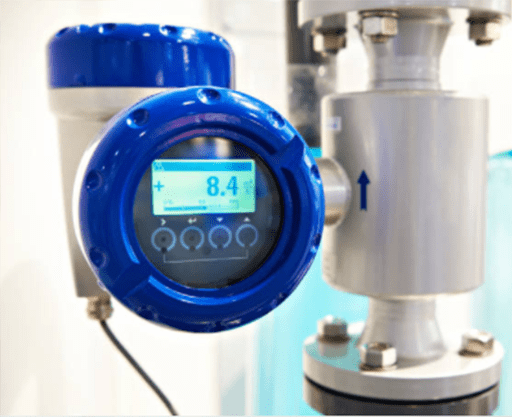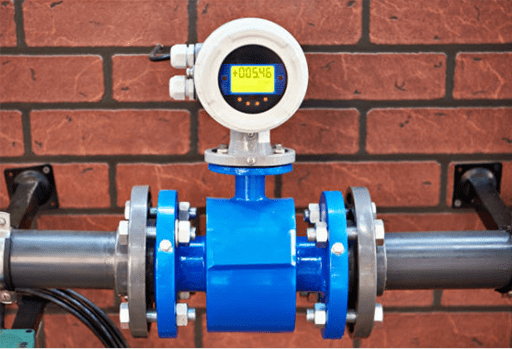
Figure 1: Electromagnetic Flowmeter.
Before discussing grounding, I want to give you a question: what is grounding? We usually talk about all kinds of grounding including protection grounding, shielding grounding, working grounding, signal grounding and so on. These are functions that need to be realized through grounding. Discharging electromagnetic interference, preventing lightning strike, protecting personal safety and so on are the purposes that need to be realized through grounding.
The essence of grounding is to establish equipotential based on the earth between each point of the circuit as needed. Take electrical leakage as an example, we can force the potential at the leakage point to be equal to the position of the human body through grounding. So we can form an equipotential between the leakage point and the position of the human body. In this way, if there is no potential difference, there will be no current and people will not get an electric shock. Therefore, there is a protective grounding that can protect personal safety.
1. Why Should Electromagnetic Flowmeter Be Grounded
The grounding point of sensor output signal shall be electrically connected with the measured medium which is a necessary condition for the operation of electromagnetic flowmeter. If this condition is not met, the electromagnetic flowmeter will not work normally which is determined by the signal circuit of the sensor. When the fluid cuts the magnetic line of force to generate the flow signal. It takes the fluid itself as the zero potential. The positive potential is generated on one electrode and the negative potential is generated on the other electrode which changes alternately.
Therefore, the midpoint (signal cable shielding layer) at the input end of the converter must be at zero potential and conductive with the fluid. So, it will form a symmetrical input circuit. The midpoint of the input end of the converter is electrically connected with the measured fluid through the grounding point of the sensor output signal.

Figure 2: A electromagnetic Flowmeter connected with the ground.
Because the output signal of the sensor is very small, it is usually only a few millivolts. In order to improve the anti-interference ability of the instrument, the zero potential in the input circuit must be grounded. And the earth potential is the zero potential which is the sufficient condition for the grounding of the sensor. Poor grounding or no grounding wire will lead to external interference signal and lead to sampling error of AD converter of electromagnetic flowmeter. The forms of error reporting includes empty pipe and the signal is zero or negative.
2. Matters

Figure 3: Matters should be attention.
1. The grounding point of the instrument shall be an independent grounding point, which is not allowed to be connected with the grounding wire of other electrical equipment. The grounding resistance shall be less than 10 Ω, and some models of instruments shall be less than 100 Ω.
2.When the sensor is installed on the insulated pipe, grounding rings must be installed at both ends, and then connected with wires to "connect" with the fluid. If the conductivity of the measured medium is low, a short metal tube can be used to replace the grounding ring to ensure the grounding effect. The metal process pipe should be in direct contact with the medium, and the grounding wire shall be directly connected with the metal pipe or flange. So, the grounding ring is not required.
Related Info
What is a flowmeterWhat is a thermal mass flowmeter
What does an expansion valve do


